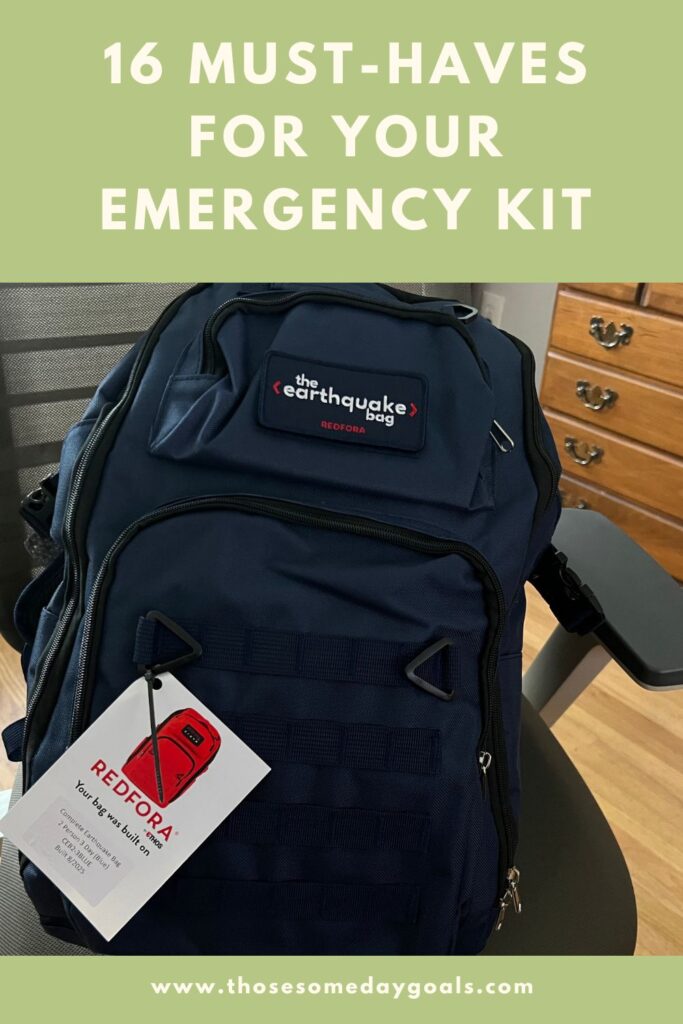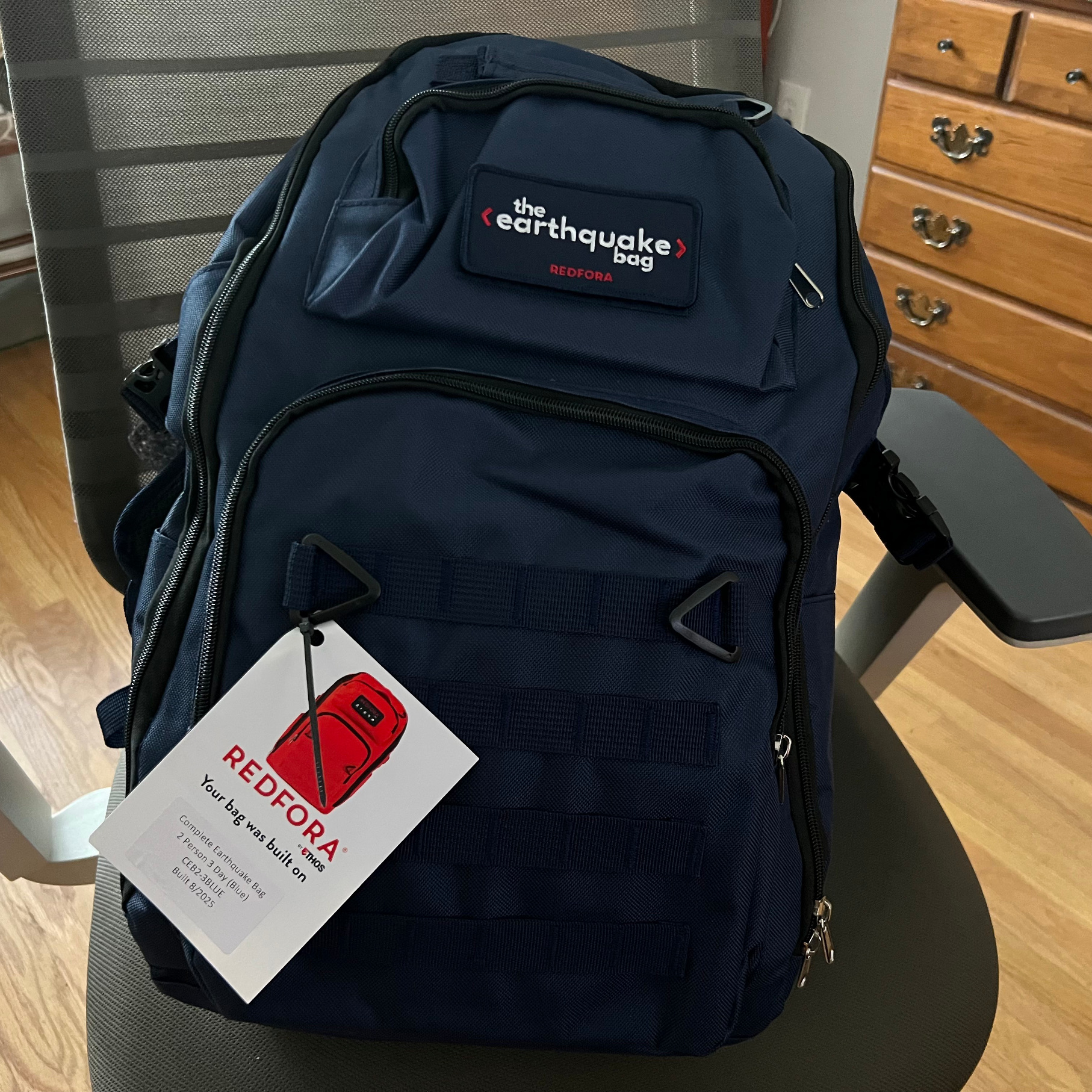I’ve never thought of myself as a “prepper,” but 2025 has taken my desire to be prepared to a new level. Naturally, being in Los Angeles, we had an earthquake kit. But after the fires and the tsunami warning, and, of course, the fake crisis fantasy that brought the marines to town, I’ve started re-assessing our need for an in-house emergency kit, as well as a “go bag.”
Additionally, the last time I packed a go bag, I literally grabbed a bin of sentimental photos, which also included items like my second-grade report card. I don’t know why my mom saved it, but I’m pretty sure I don’t need to take it with me during an evacuation. At least, I don’t need it more than, say, prescription meds, nutrition bars, or comfortable clothing.
So, now, we are making a better plan. Here’s what we want to pack in our emergency kit and why.
The Basics: Survival Essentials
These are the core items we want to have ready, regardless of what kind of emergency might occur. These items are critical for both in-home emergency kits and go bags if you can evacuate in a car, cargo bike, or with a cart.
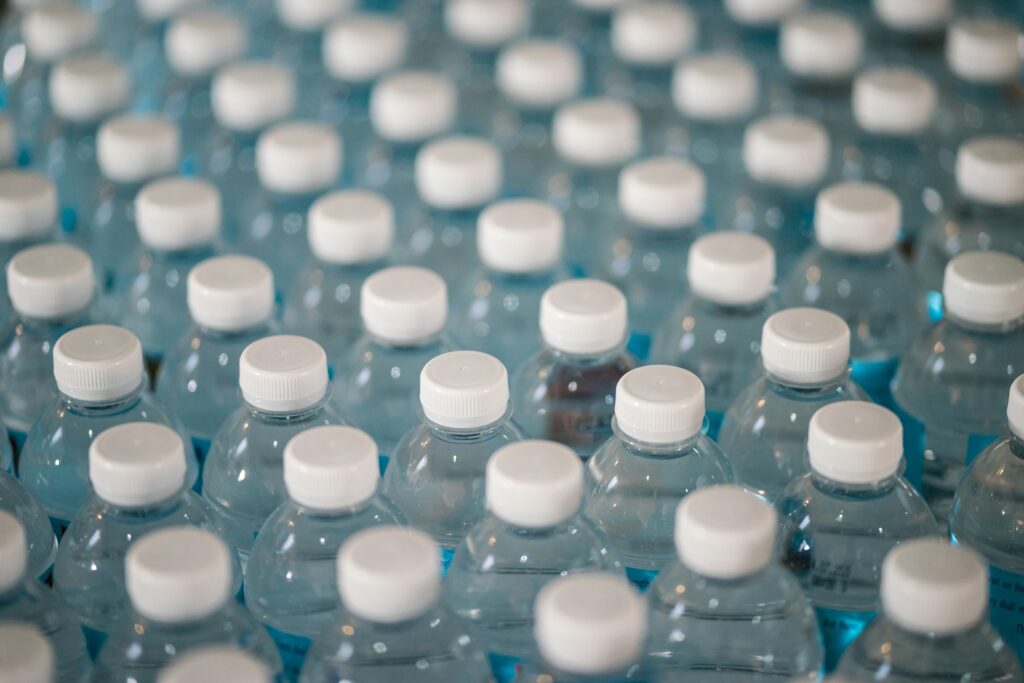
1. Water
How much: 1 gallon per person per day. We’ve all heard the warnings; we need to assume that we are on our own for at least 3 days. Emergency services may be stretched, and it can take longer than expected to restore power for boiling water.
If you fear running out, consider investing in LifeStraws or other personal water filters, as well as water purification tablets, to ensure a reliable source of water. They take up less space, and they are ideal for slipping into your go bag for situations when you have mere minutes to evacuate.
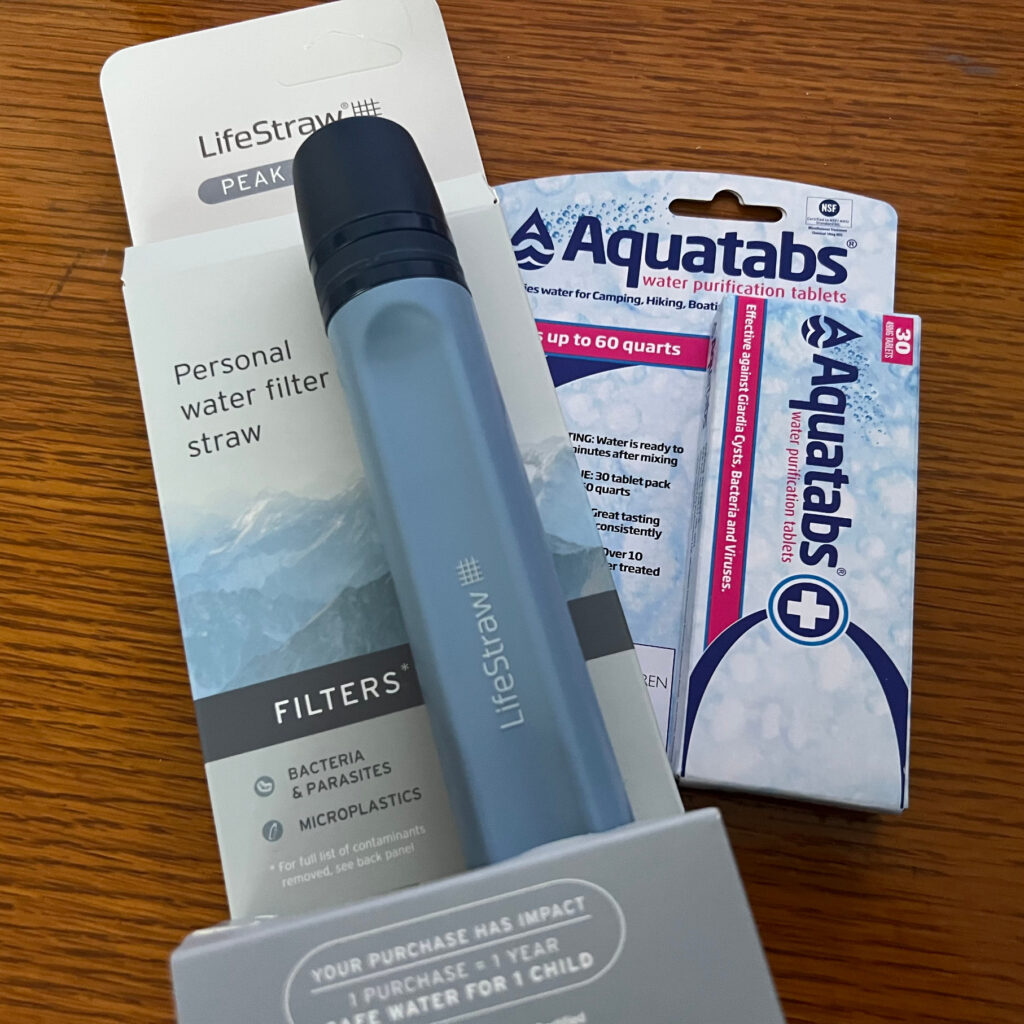
2. Non-Perishable Food
Examples: Energy bars (I miss Zone Bars so much!), canned goods (don’t forget to pack a can opener if you bought cans without pop tops), dried fruit, nuts, jerky, and ready-to-eat meals (MREs).
Our local Indian grocery has fantastic MREs that even include vegan options. Technically, they would need heating, but they are heated in a sealed packet, so you can fill a receptacle and heat it on your outdoor grill, Coleman stove, or use a solar generator. We can also eat them cold if we have no other choice.
Tip: Choose items that don’t need cooking or refrigeration.
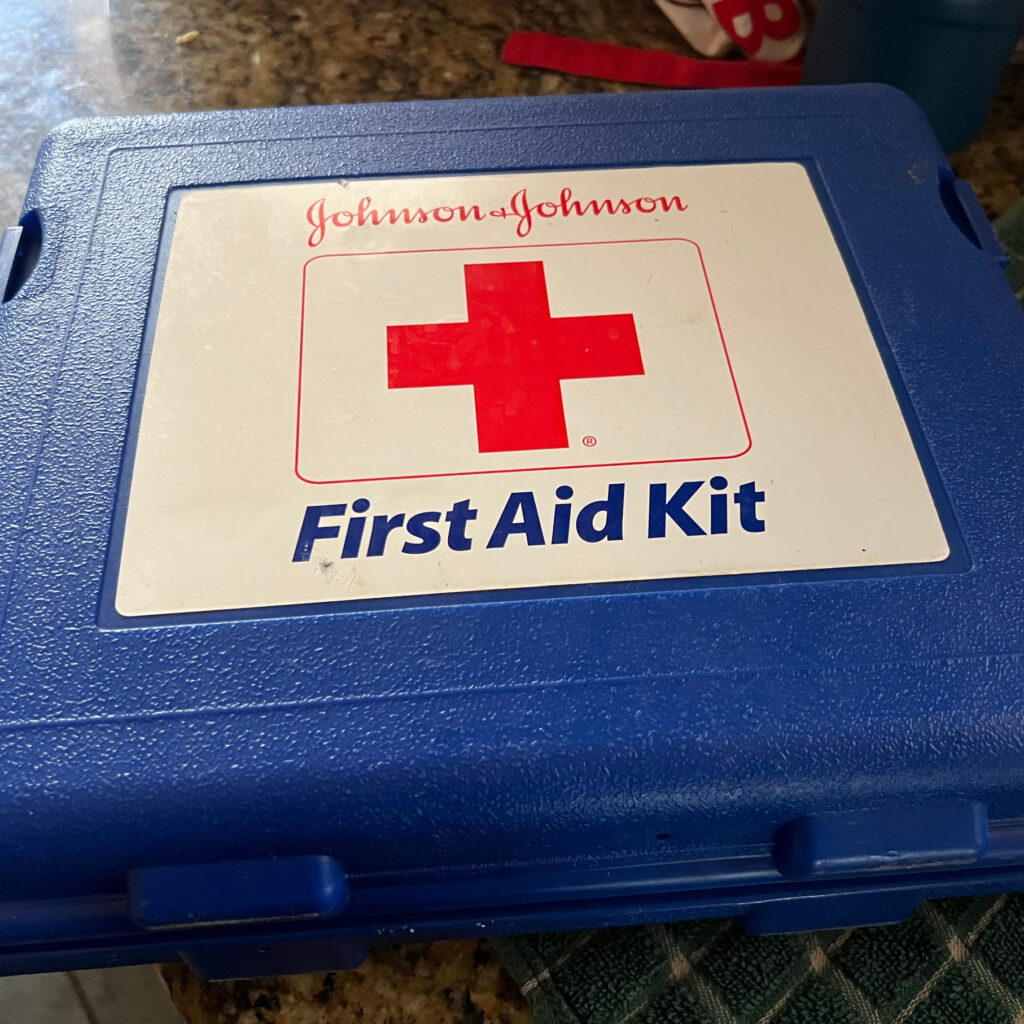
3. First Aid Kit
Must-haves: Bandages, antiseptic wipes, gauze, medical tape, pain relievers, tweezers, and any prescription meds. Whenever I do a decluttering or seasonal cleaning, I make sure to toss expired pain relievers and replace them. I like to have my back up glasses in here, too.
Nice-to-haves: Burn cream, allergy meds, scissors, gloves, N95 masks, and COVID tests. The COVID tests are really for an at-home emergency kit rather than our go bag, but if you have an all-in-one emergency kit, you might as well slip one in there.
What we are considering adding: We are seriously considering half-face respirators, which we need to start using for our painting projects anyway. I wouldn’t buy them just in case of emergencies (although people who had them during the fires were pleased they did), but since they could address a need we will have, they are going on the list.
4. Cash and Emergency Credit Cards
I know, I know. Nobody carries cash anymore. I think it’s worth having an emergency credit card that will cover the cost of things like a hotel room and gas/EV charging. BUT I also think that having cash available, in case point-of-sale machines don’t have power or internet, can make evacuating much less of a hassle. We aren’t talking about thousands of dollars, but if you can scrap together at least $100 in small bills, you’ll probably be happy you did.
Tools & Gear
Things we are adding or already have in our go bag.
5. Multi-tool or Swiss Army Knife
Tip: Can be a knife, screwdriver, scissors, and a bottle opener/corkscrew
6. Flashlight (with extra batteries)
We have lanterns set around the house so that they are easily accessible and don’t force us to stumble around in the dark. They are also super light, so we can grab them and go too. Headlamps are also great for hands-free lighting. There are some small versions that can easily be stuffed into go bags.
7. Portable Phone Charger (Power Bank)
Some emergency radios also have USB ports to help charge phones. Additionally, having an emergency radio on hand is beneficial when the internet and cell towers are disrupted by natural disasters.
8. Whistle
A simple way to signal for help if you’re lost or trapped. We also have a flashlight with an alarm and flashing mode, to alert emergency services in case we need help.
9. Duct Tape
As my dad always said, duct tape fixes everything, from gear and tubes to clothing.
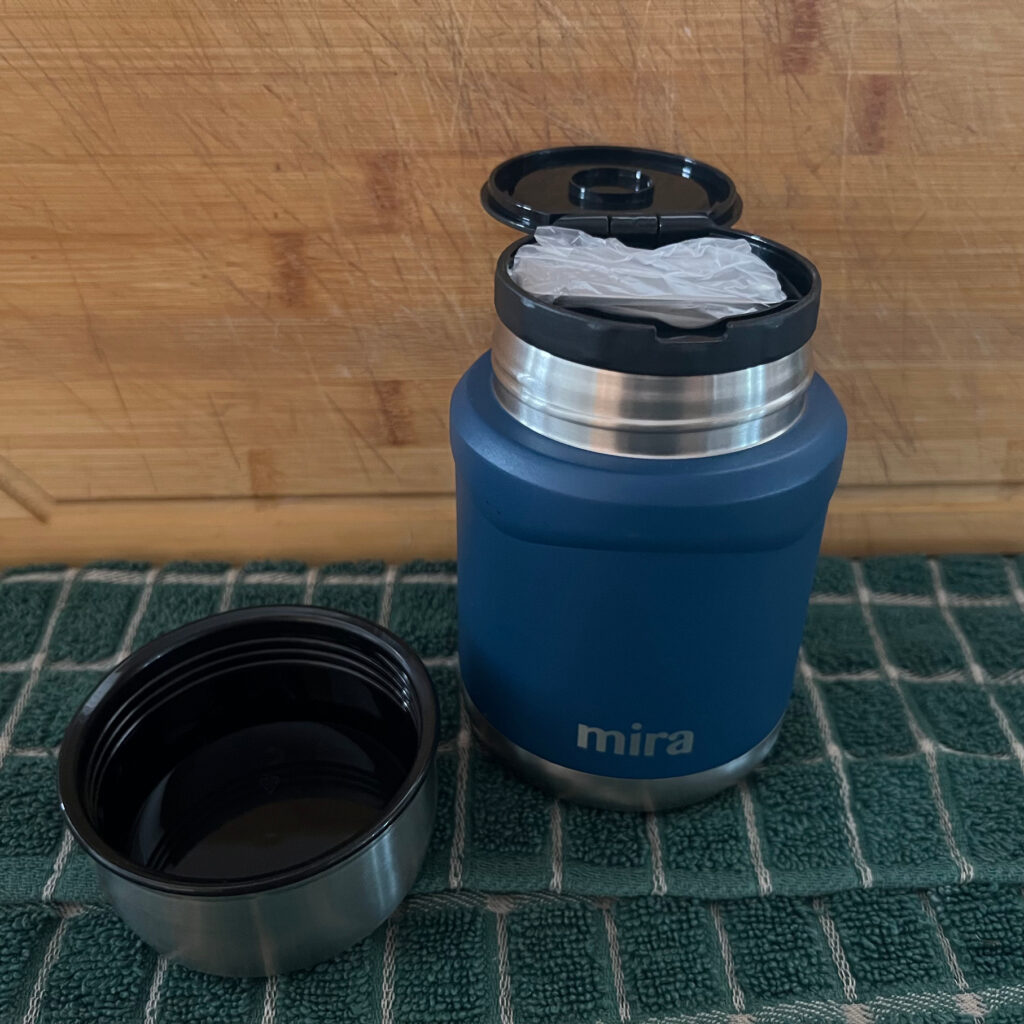
10. Insulated Food Jars
This may seem random, but we have a MIRA insulated food jar that is pretty awesome. It works to keep hot soup hot and cold things cold. Plus, it has a secret compartment that stores a foldable metal spoon. We got it for trips out on the boat and our road trip, but I can see it coming in pretty handy in other emergency situations.
11. Solar Generators
This is another thing we are seriously considering for our at-home emergency kit. Portable solar generators have come down in price considerably, and we have space for the few panels required to recharge the unit. Plus, there are no dangerous fumes, so the unit can be inside the house. But it is still a big purchase, so it’s going to take more thought before ordering.
12. Maps
I know, it seems weird. But Google maps is not going to work if the internet or cell service is down. It’s worth at least taking a look at your evacuation routes, if you don’t want to get a physical map.
Clothing & Comfort
If we are forced to evacuate, grabbing comfortable clothing quickly is a must. Having packed a go bag during the fires, this turned out to be much harder than we thought it would be. Too many choices. Next time, we will:
13. Clothes
Have at least one change of clothing that we can sleep in and several changes of underwear in the go bag itself. Consider weather-appropriate gear, such as a rain jacket, gloves, and a hat.
Tip: The best advice we got after the fires was to always grab your laundry bag. Yes, it might be dirty, but it is likely to include clothing that fits you, you like wearing, and is seasonally appropriate. Plus, laundry bags are easy to fill with other things as you are running out the door.
14. Blanket or Emergency Sleeping Bag
Mylar emergency blankets are lightweight and retain body heat. We have two in our go bag. We also have an emergency sleeping bag in the closet.
Important Documents
15. Copies of IDs, Vital Records, Hard Drives
Include photocopies of your driver’s license, birth certificates, passports (particularly these days), insurance policies, and medical info in a waterproof bag or folder.
I have a lot of backup information on small hard drives that are kept close to my go bag. This also includes digital scans of sentimental photos and other personal items that I would hate to lose.
Hygiene & Sanitation
16. Toiletries
Toothbrush, toothpaste, hand sanitizer, soap, feminine hygiene products, baby wipes, a disposable razor, and toilet paper.
Tip: Those small travel bottles of shampoo, conditioner, and body wash are great for slipping into go bags.
